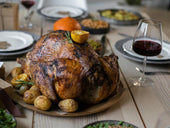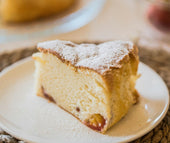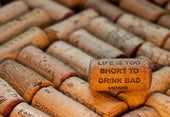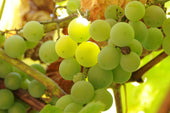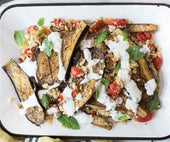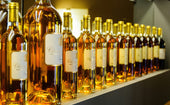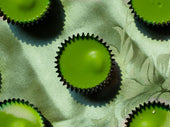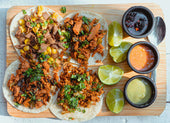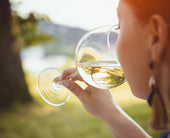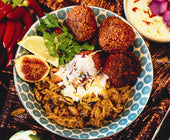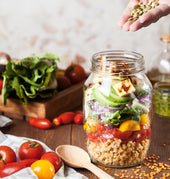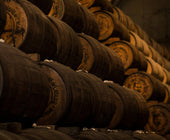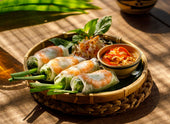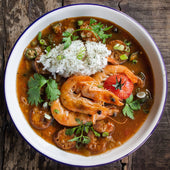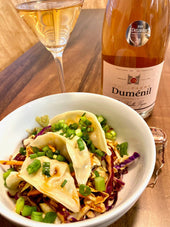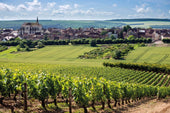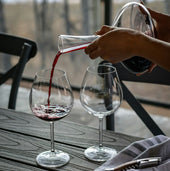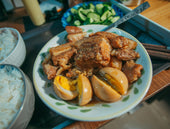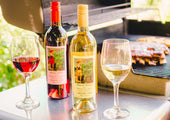
Quince: An Oldie But A Goodie
This old world fruit has become all the rage over the last couple of years. Now that products made from this fruit are being imported, this exotic fruit is becoming more readily available. One reason we love quince so much is that its season picks up where figs leave off. It can be difficult to find figs to add to our cheese plate after late summer. Luckily, autumn is when the quince is at its peak and its jellies, jams and pastes pop up in all sorts of markets around town. Our cheese plates can go on without feeling incomplete.
Some background on this exciting old world favorite; quince is a fruit that is native to South West Asia and the southern and central parts of Europe. Its cultivation has also more recently spread to Australia and northern parts of South America. This yellow green fruit is similar in appearance to a pear once it is mature and is only edible for humans once it is cooked. The quince fruit has a deep history and is said to have been cultivated before the apple. It was a ritual offering with the ancient Greeks and a special fruit in the cookbook of the Romans. Writer, Pliny the Elder had mentioned this golden fruit in his writings.
Though quince is not palatable eaten raw, the fruit is still used in a variety of ways throughout the world. Some regions of the world make wine from this fruit. In the Balkans, quince brandy is made. The quince is most commonly turned into a jelly or firm jellied paste. Sometimes it is pickled or candied. When being cooked to make these foods, the yellow meat of the quince fruit becomes bright pinkish-red from the added sugars. This bright paste is how we have come to know quince here in the US.
In Morocco and other Eastern European countries, quince is used in lamb tajines where the meat is stewed with cinnamon and other herbs and spices. Quince has also been recently spotted being used in fermented apple ciders and added to teas. Here at home we tend to use quince with cheese since it is most available as a jelly or paste, also known as dulce de membrillo.
Quince is excellent with Manchego or Stilton cheese. Sharp white cheddar, stinky blue cheese and stronger soft rind cheese like Camembert can also be excellent with this paste. When serving the ruby paste on a cheese plate, try topping it with some cracked black pepper for added flavor dimensions. It can be used spread into a toasted crostini or melted into finger sized paninis.
It's certain to be amazing in place of chutney over a baked soft rind cheese as well. You really can't go wrong with quince. With anything that you use marmalade or fig, quince has potential to be an amazing substitute. Do we dare alter our favorite recipe of grilled bacon wrapped figs stuffed with blue cheese? It could be a match made in heaven.
You're probably wondering, so where does the wine come in? When being served with an after dinner cheese course, we'd recommend a sweet white wine like a Sauterne. However, since we often do not indulge in cheese as a dessert course here at home, we'd recommend a more versatile wine likes like a dry Bordeaux White. These wines are white blends with a nice touch of Semillon that has good apricot, honey notes and minerality to balance the quince's acidity and intense flavors.
Another great French white wine with lots of Semillon influence would be Chateau Chantegrive Cuvee Caroline. With a little oak on this wine, it could be a perfect standby for impromptu dinner parties and formal celebrations.
Keenan Napa Valley is a new world Chardonnay with a nice body and full of flavors that could be very versatile with appetizers, cheese plates and main entrees. When enjoying quince in a main entrée, we recommend pairing the wine to the style of entrée or type of meat. For inspiration on cheese plates and appetizers, read our previous posts on cheese pairings and antipastos!
So where can you find quince paste or jelly? It is common in Latin markets and is currently available at Trader Joe's and Whole Foods. . But ask your local market; quince is everywhere these day. Remember this item is usually seasonal, so be sure to stock up!
This post has been contributed by Katrina Coulourides, our Art Director and Graphic Designer & Monica Yu, Wine Buyer. This information is sourced from http://en.wikipedia.org/wiki/Quince




